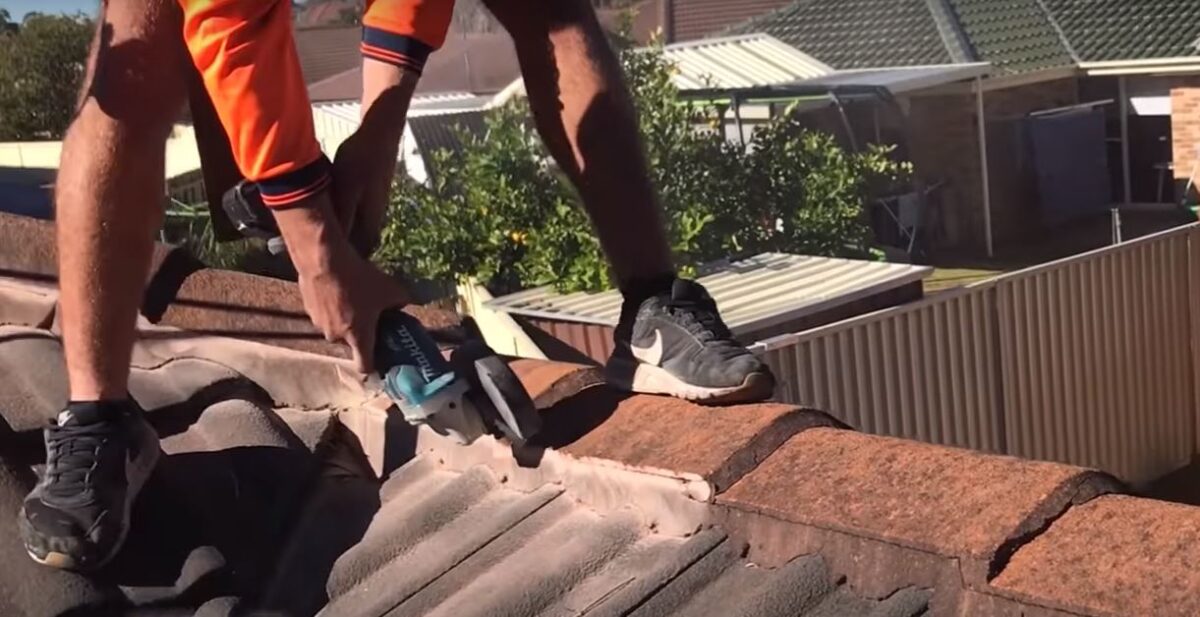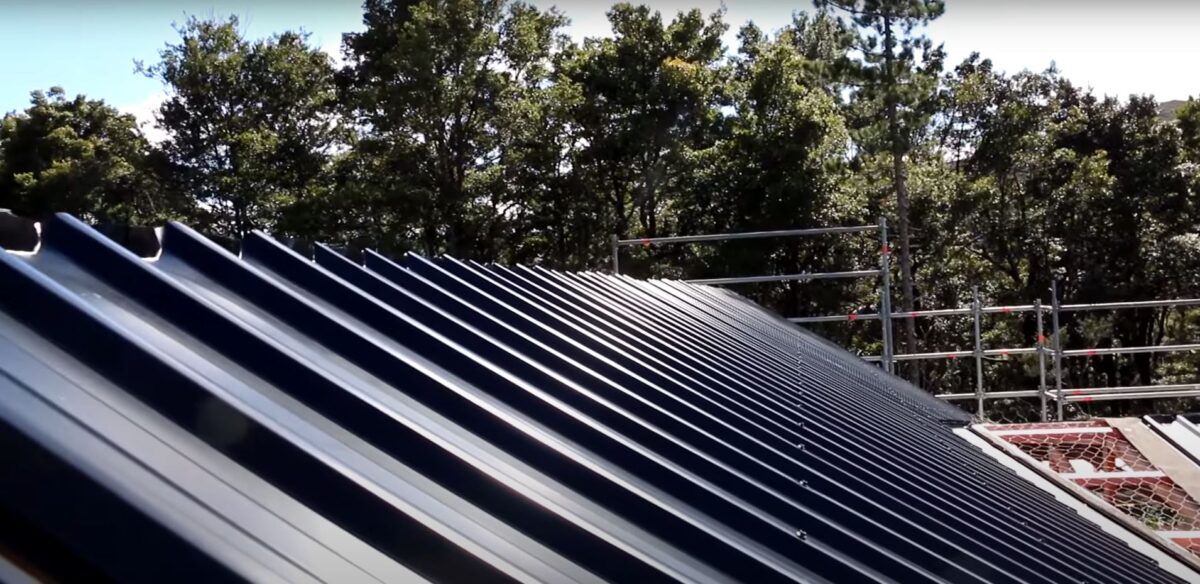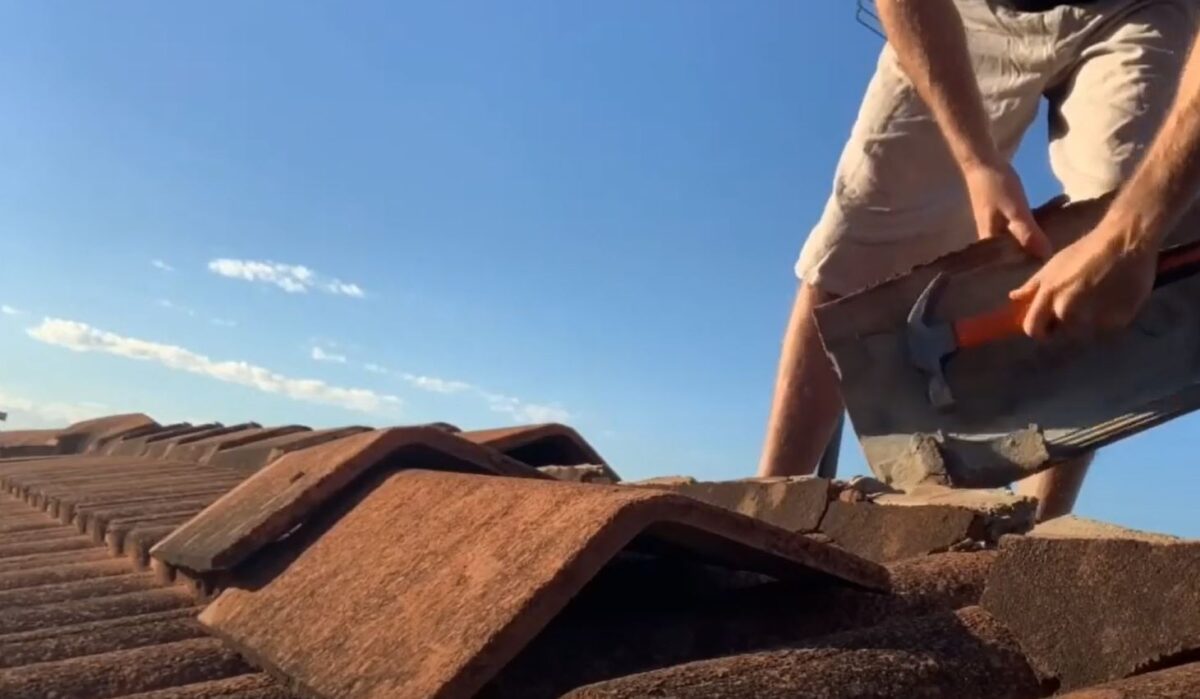Material Choices: Know What You’re Working With
When it comes to roof restoration in Auckland, your choice of material is crucial.
- Concrete tiles: Known for their durability and classic appearance. Restoration often entails resealing and repainting. Restoration costs: NZD 91-117 per square metre.
- Steel/Metal roofs: Celebrated for their resilience to harsh weather. Restoration can involve repainting and resealing. Restoration costs: NZD 110-143 per square metre.
- Clay tiles: Less common but exuding a Mediterranean charm. Restoration frequently comprises tile replacement and repointing. Roof Restoration costs: NZD 117-156 per square metre.
Gutters, Downpipes, and Skylights: The Essential Complements
Your roof is more than just tiles or shingles; it’s a comprehensive system.
- Gutters and Downpipes: Integral for adequate water drainage, these parts, during a restoration, may need cleaning, realignment, or even replacement. Cost: NZD 39-58.5 per linear metre.
- Skylights: Examine them for any signs of cracks or leaks. Addressing these might mean replacing the seal or the entire unit. Restoration or replacement costs: NZD 325-520 per unit.
Pondering Over Environmental Aspects
When restoring your roof, thinking green can make a significant difference.
- Opt for materials that offer solar reflectivity to curtail heat absorption.
- Ensure you have efficient insulation to reduce energy usage.
- Choose environment-friendly paints and sealants.
Navigating Auckland’s Bylaws and Health and Safety Standards
In Auckland, being cognizant of certain protocols and regulations is paramount.
- Health and Safety: Roof tasks necessitate adherence to strict safety measures, which can affect labour costs.
- Auckland Council Bylaws: Specific suburbs have particular codes to follow. For instance, in Ponsonby and Remuera, heritage conservation-related restrictions may dictate the choice of materials and techniques. Always consult your regional council for precise directives.
The Merits of a Professional Assessment
Always start with a thorough professional assessment. It facilitates:
- Pinpointing potential hidden issues.
- Accurate cost prognoses.
- Tailored advice for Auckland’s distinct climate and challenges.
Pitting Restoration against Replacement
At times, a total roof replacement might be more cost-effective in the long haul. If installing a new roof is marginally pricier than a full restoration, it could be a wiser decision.
Prime Tips for Effective Roof Restoration:
- Budget Astutely: Beyond the immediate restoration charges, reserve an additional 10-15% for unforeseen outlays.
- Engage Experts: Especially those familiar with Auckland’s specific nuances.
- Consistent Maintenance: After restoration, routine inspections will enhance its lifespan.
- Warranties Are Crucial: Opt for materials and services backed by a robust warranty.
- Patience is Key: Quality outputs demand time. Avoid rushing.
Summary Table of Estimated Cost Breakdown:
| Item/Service | Cost (NZD) |
| Concrete tile restoration (per sq. m.) | 91-117 |
| Steel/Metal roof restoration (per sq. m.) | 110-143 |
| Clay tile restoration (per sq. m.) | 117-156 |
| Gutters/Downpipes (per linear metre) | 39-58.5 |
| Skylight restoration/replacement (per unit) | 325-520 |
Aucklanders looking to restore their roofs should make informed decisions, align with local regulations, and recognize the unique challenges the area poses. Whether it’s a cherished family home or a valuable business establishment, ensure your roof not only stands out but is also enduring.
Frequently Asked Questions on Roof Restoration
What factors influence the cost of roof restoration in Auckland?
The size of the roof, material type, the current condition, and any additional structures or features (e.g., skylights) play roles in the overall pricing. Regional bylaws and health and safety requirements might also impact costs.
How often should I consider restoring my roof?
Generally, a well-maintained roof might need restoration every 15-25 years. However, the Auckland climate, material type, and the quality of the initial installation can influence this timeframe.
Are there specific Auckland suburbs that have unique roofing requirements?
Yes, areas like Ponsonby and Remuera might have heritage conservation-related restrictions affecting material choices and restoration techniques. It’s always a good idea to check with your regional council.
How can I tell if my roof needs restoration or a full replacement?
If damage is extensive or the roof is nearing the end of its lifespan, replacement might be more cost-effective. A professional assessment can provide clarity on this matter.
Is there an environmentally-friendly approach to roof restoration?
Absolutely. Opting for solar reflective materials, using green paints and sealants, and ensuring efficient insulation are ways to make your roof restoration more eco-friendly.
How long does a typical roof restoration take in Auckland?
The duration depends on the roof’s size, its condition, and the work needed. Typically, a standard roof restoration might take anywhere from 2-5 days, but complex jobs can extend beyond this timeframe.



